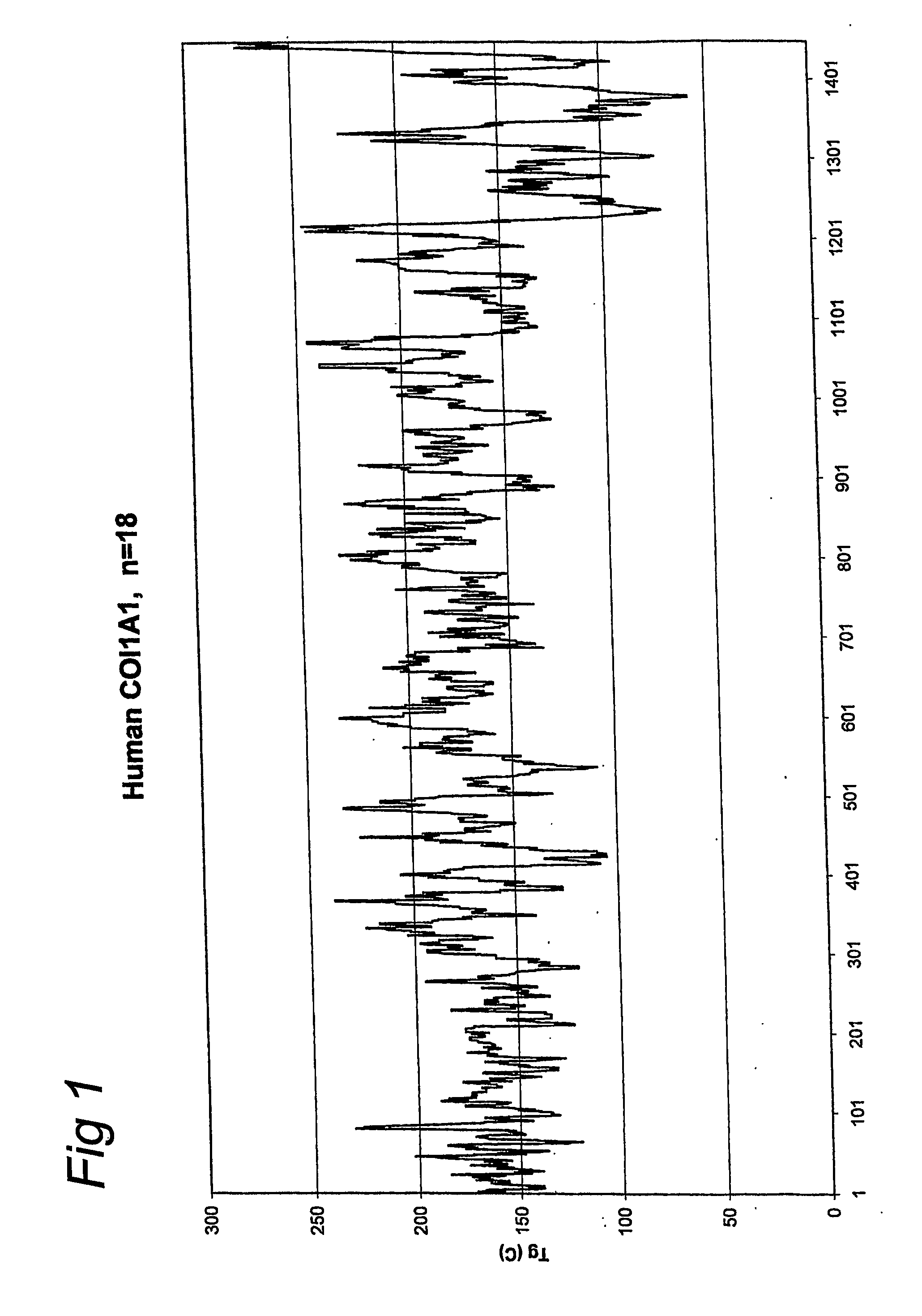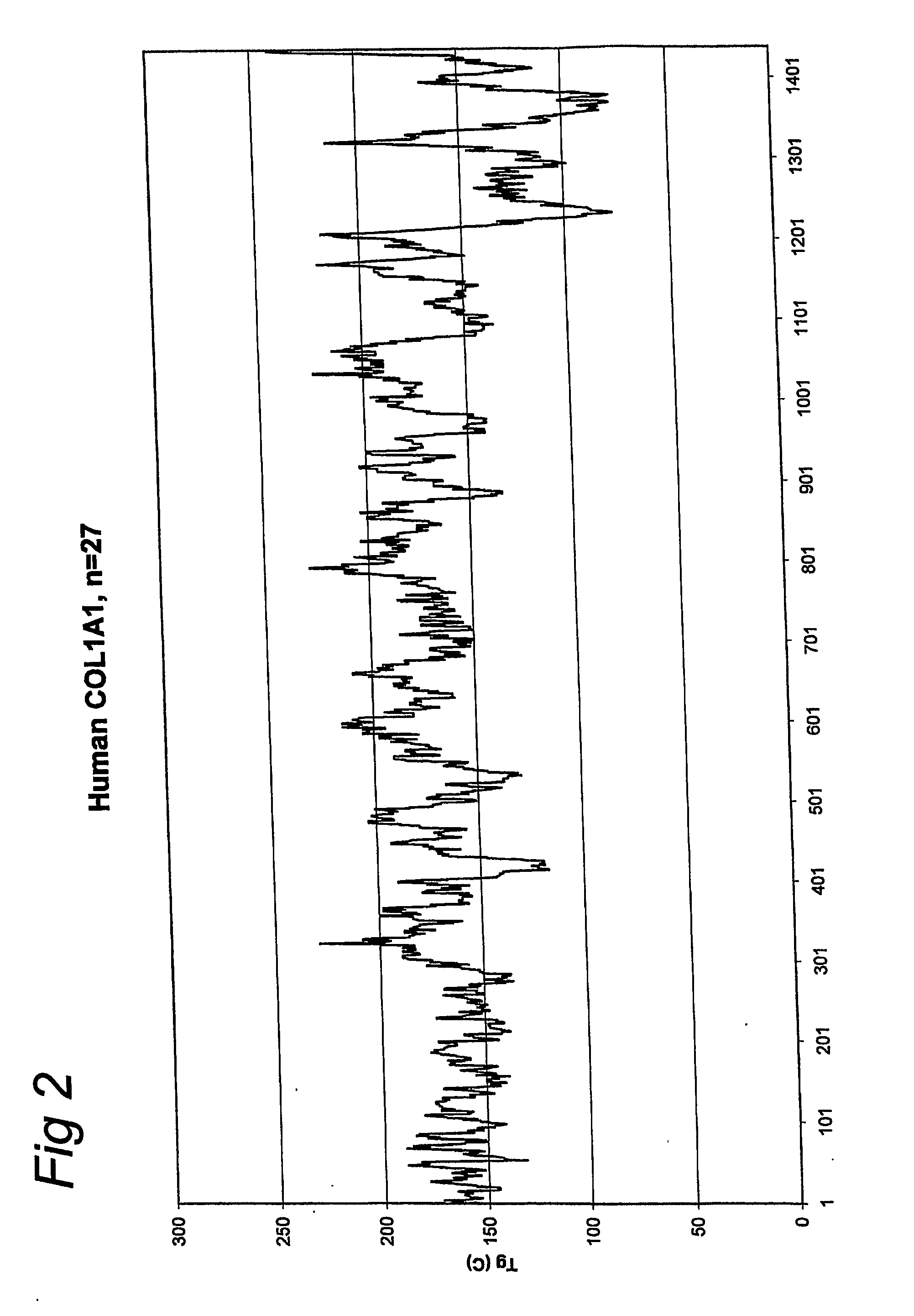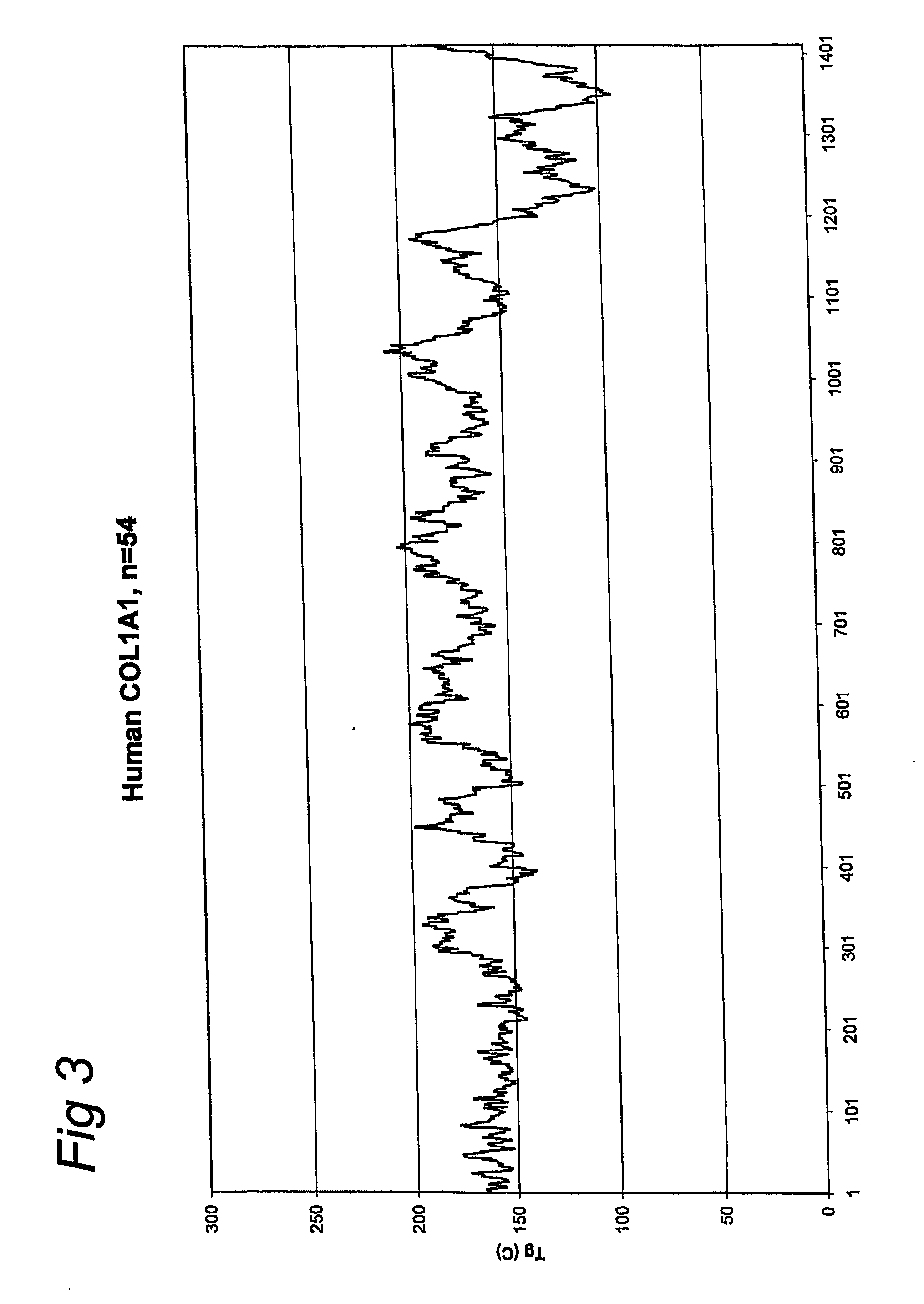Use of recombinant or synthetic gelatin-like proteins as stabiliser in lyophilized pharmaceutical compositions
a technology of gelatin-like proteins and stabilizers, which is applied in the direction of peptide/protein ingredients, animal/human proteins, connective tissue peptides, etc., can solve the problems of gelatin derivatives, difficult to maintain severe storage conditions of vaccines, and the possibility of immediate hypersensitivity, so as to reduce the damage to the physiologically active substance or the gelatin. , the effect of reducing the amount of vaccines
- Summary
- Abstract
- Description
- Claims
- Application Information
AI Technical Summary
Benefits of technology
Problems solved by technology
Method used
Image
Examples
example 1
Recombinant Gelatin-Like Peptide
[0056] A gelatin with an increased glass transition temperature was produced by starting with the nucleic acid sequence that encodes for a part of the gelatin amino acid sequence of human COL1A1-1. The methods as disclosed in EP-A-0926543, EP-A-1014176 and WO01 / 34646 were used. The sequence of this gelatin according to the invention is given below (SEQ ID NO: 2):
GDRGETGPAGPPGAPGAPGAPGPVGPAGKSGDRGETGPAGPAGPVGPAGARGPA (amino acid 1034 to 1087 of SEQ ID NO: 1)
[0057] Molecular weight: 4590 Da, isoelectric point pI=6.2
[0058] This sequence was selected from the total COL1A1-1 sequence (SEQ ID NO: 1) by the method as described in this invention. A glass transition temperature of 208 degrees Celsius was calculated for this selected sequence. The average glass transition temperature of total COL1A1-1 (SEQ ID NO: 1) is 163 degrees Celsius. Therefore the calculated gain in glass transition temperature is 45 degrees Celsius.
example 2
Measurement of Glass Transition Temperature
[0059] The recombinant gelatin as described in example 1 was mixed with sucrose in a ratio of 60 / 40 wt % gelatin / sucrose, which is typical for MMR vaccine. An aqueous solution of 10% was made of this mixture. This solution was quickly frozen in liquid nitrogen and subsequently it was freeze dried for 48 hours at −55 degrees Celsius. The freeze dried sample was further dried in a vacuum exsiccator with silicagel.
[0060] DSC (Differential Scanning Calorimetry) was done using a Perkin Elmer DSC 7 instrument under nitrogen atmosphere (flow 20 ml / min). The applied temperature program was: [0061] 1 minute hold at 60 degrees Celsius [0062] 60 to 230 degrees Celsius at a heating rate of 5 degrees per minute
[0063] The glass transition temperature was determined according to the half Cp extrapolated method.
[0064] Residual moisture amounts were determined by TGA (Thermo Gravimetric Analysis) using a Perkin Ebmer TGA 7 under nitrogen atmosphere (flo...
PUM
| Property | Measurement | Unit |
|---|---|---|
| glass transition temperature | aaaaa | aaaaa |
| molecular weight | aaaaa | aaaaa |
| molecular weight | aaaaa | aaaaa |
Abstract
Description
Claims
Application Information
 Login to View More
Login to View More - R&D
- Intellectual Property
- Life Sciences
- Materials
- Tech Scout
- Unparalleled Data Quality
- Higher Quality Content
- 60% Fewer Hallucinations
Browse by: Latest US Patents, China's latest patents, Technical Efficacy Thesaurus, Application Domain, Technology Topic, Popular Technical Reports.
© 2025 PatSnap. All rights reserved.Legal|Privacy policy|Modern Slavery Act Transparency Statement|Sitemap|About US| Contact US: help@patsnap.com



